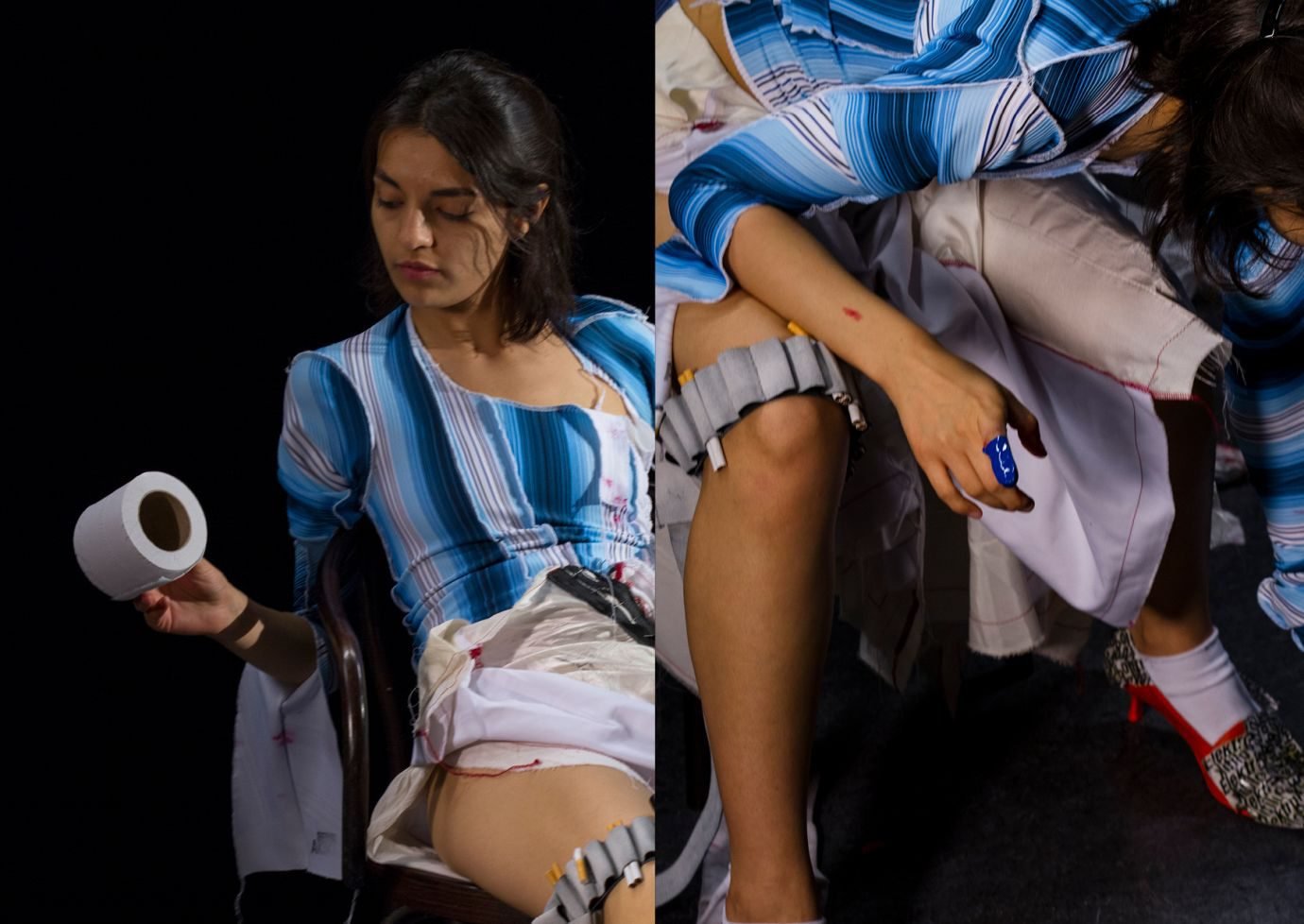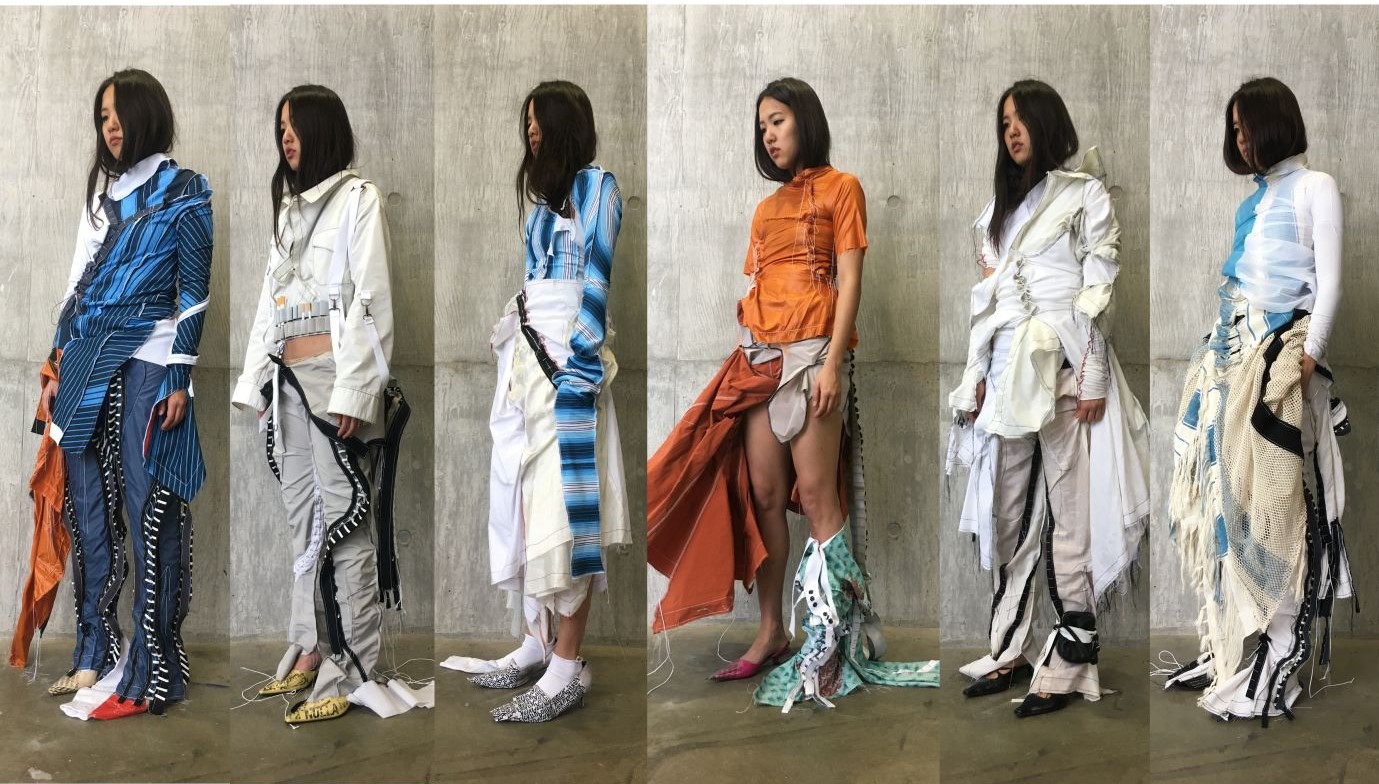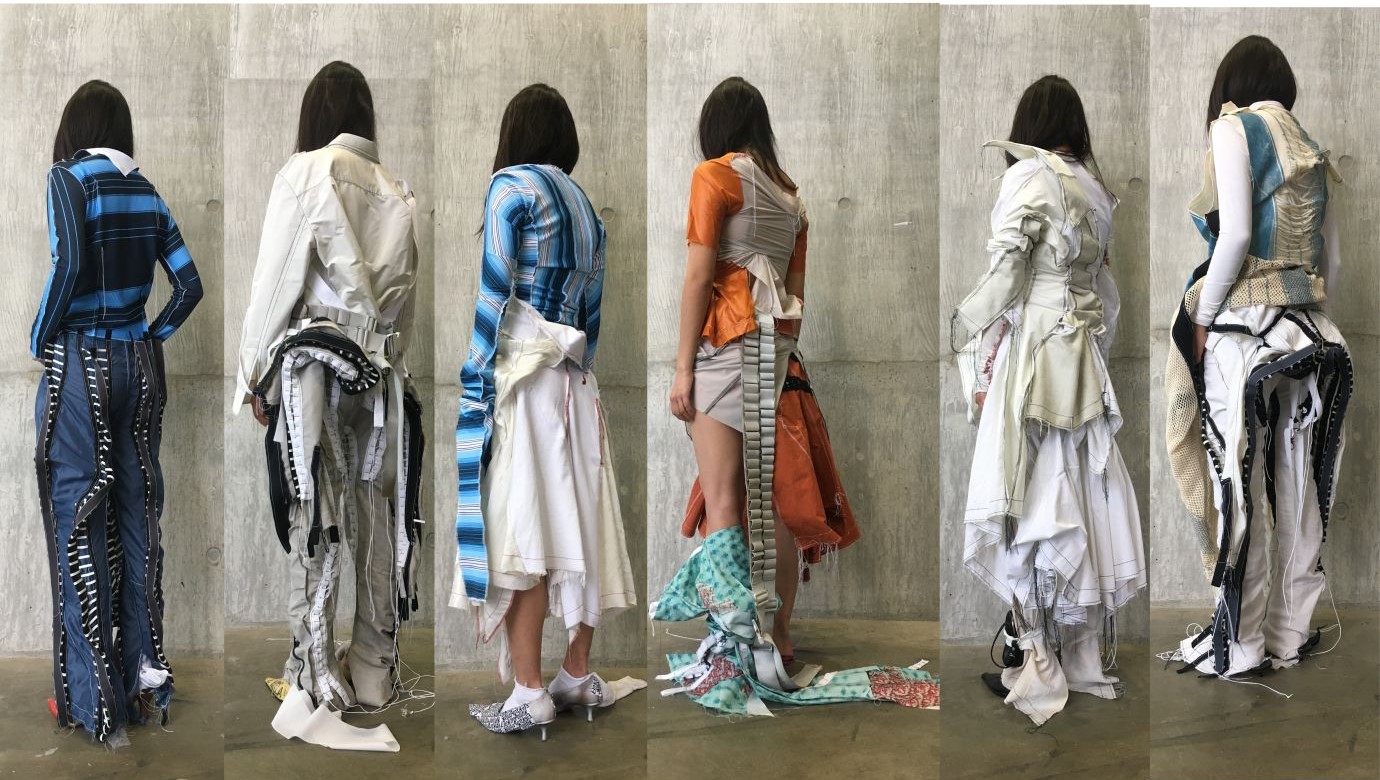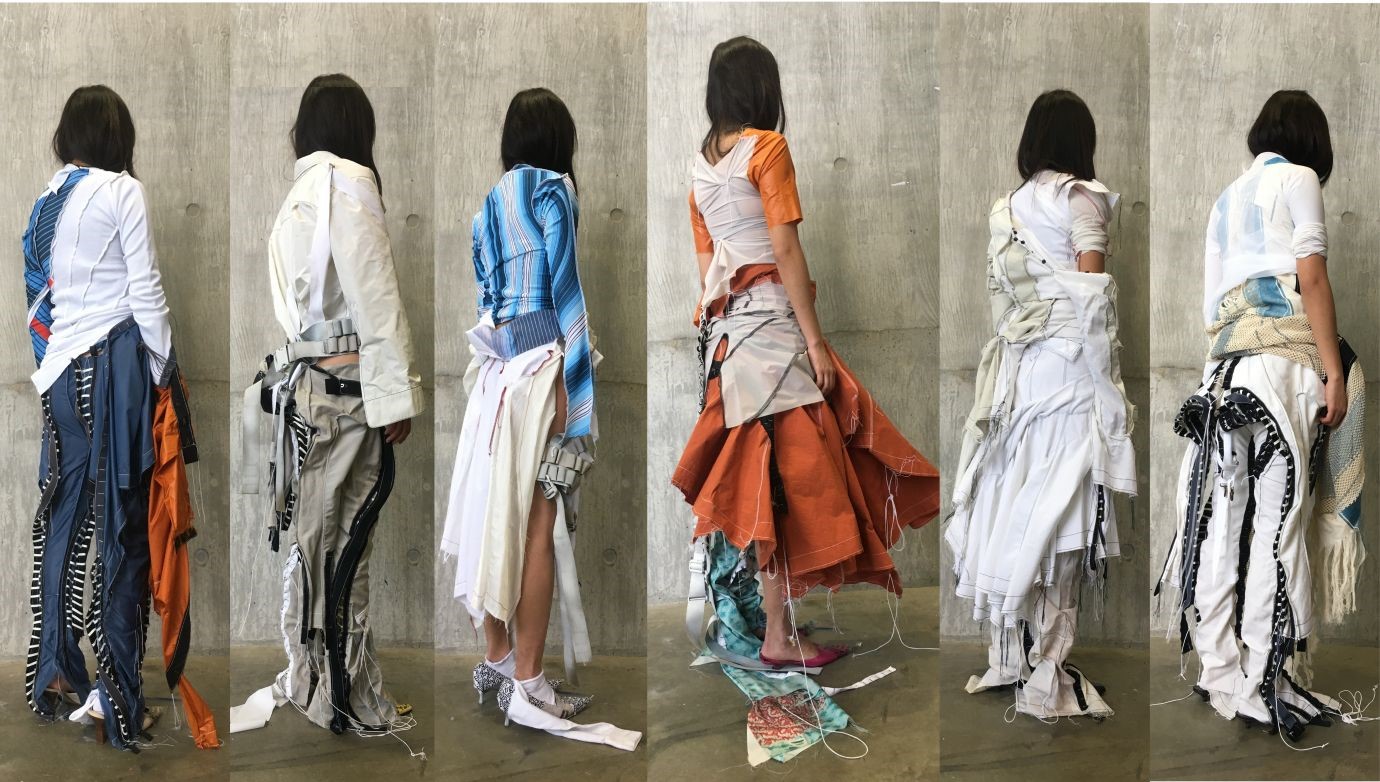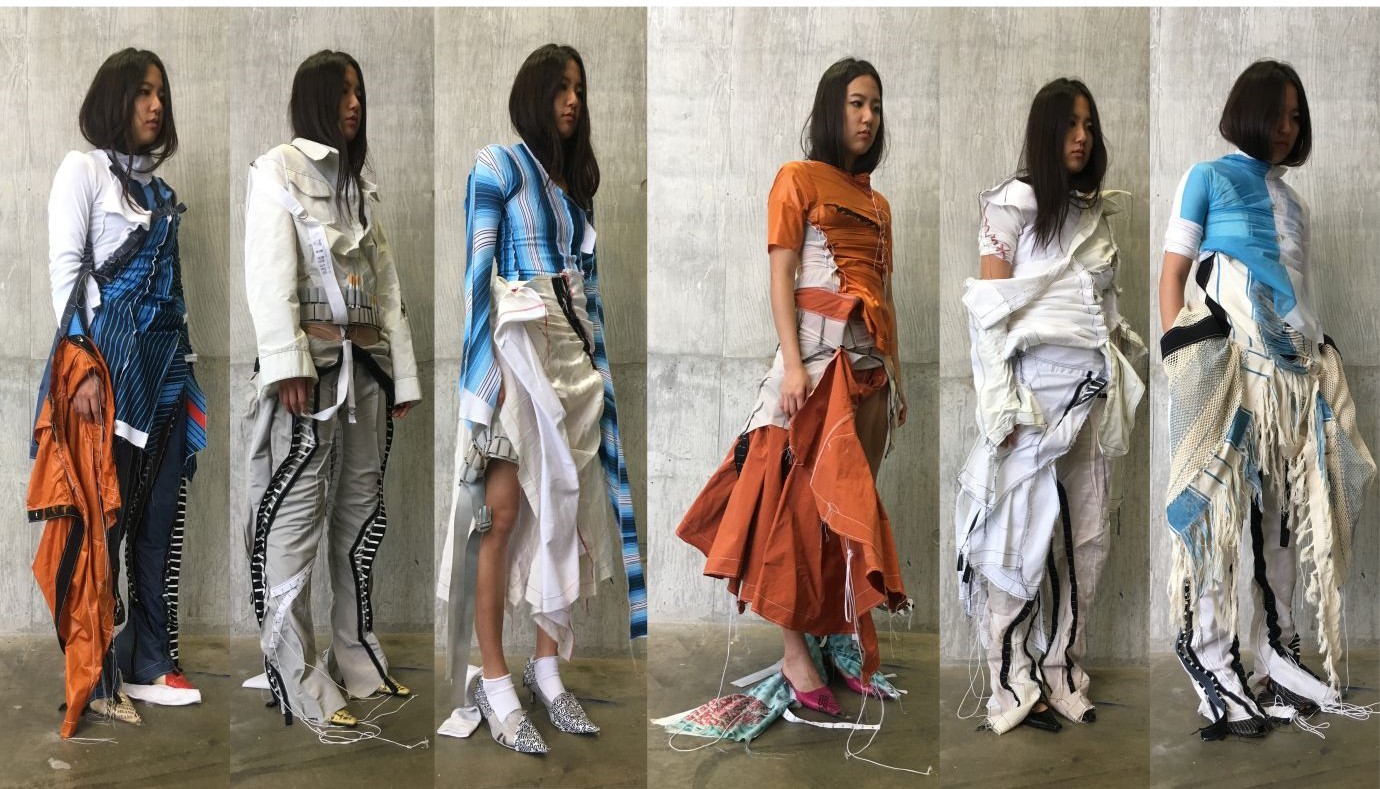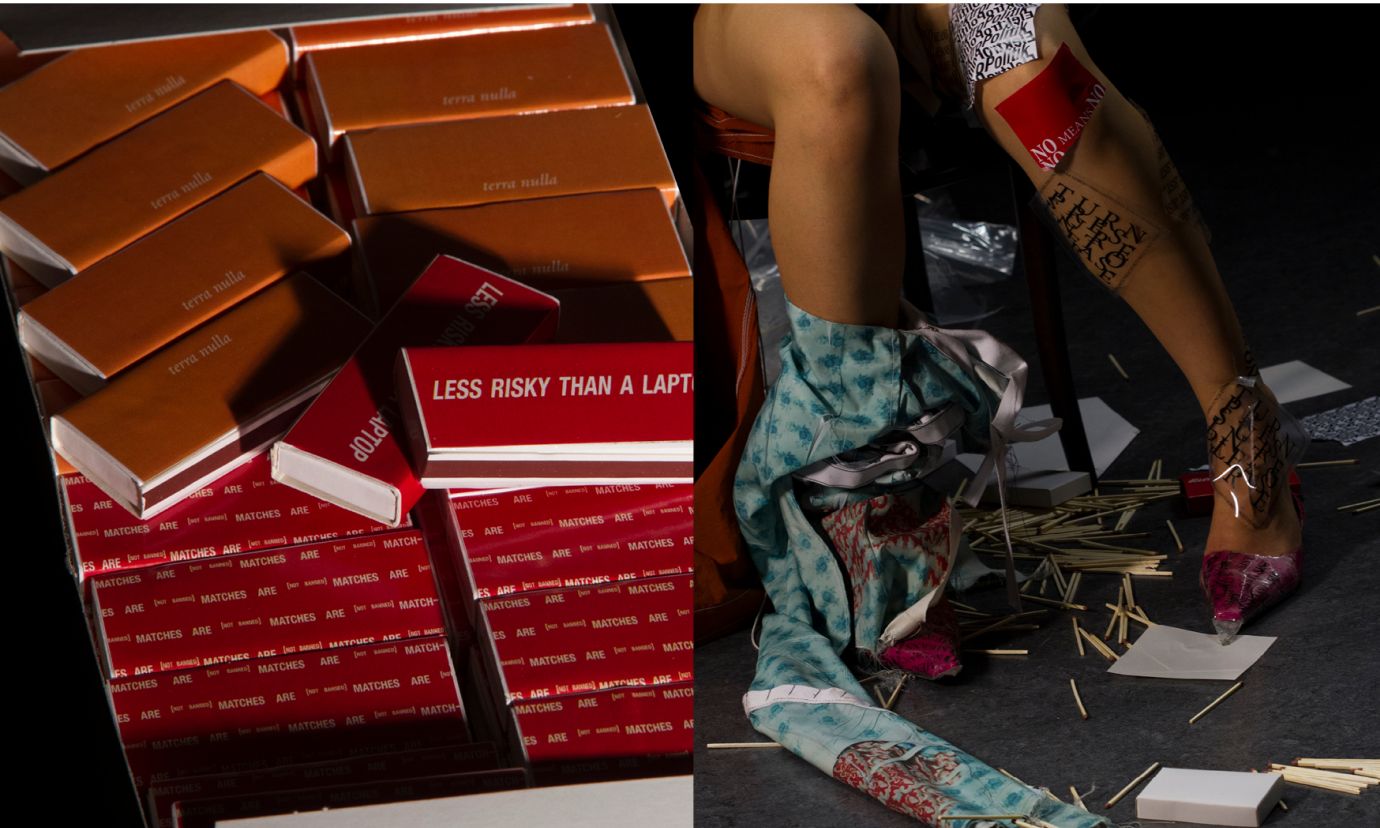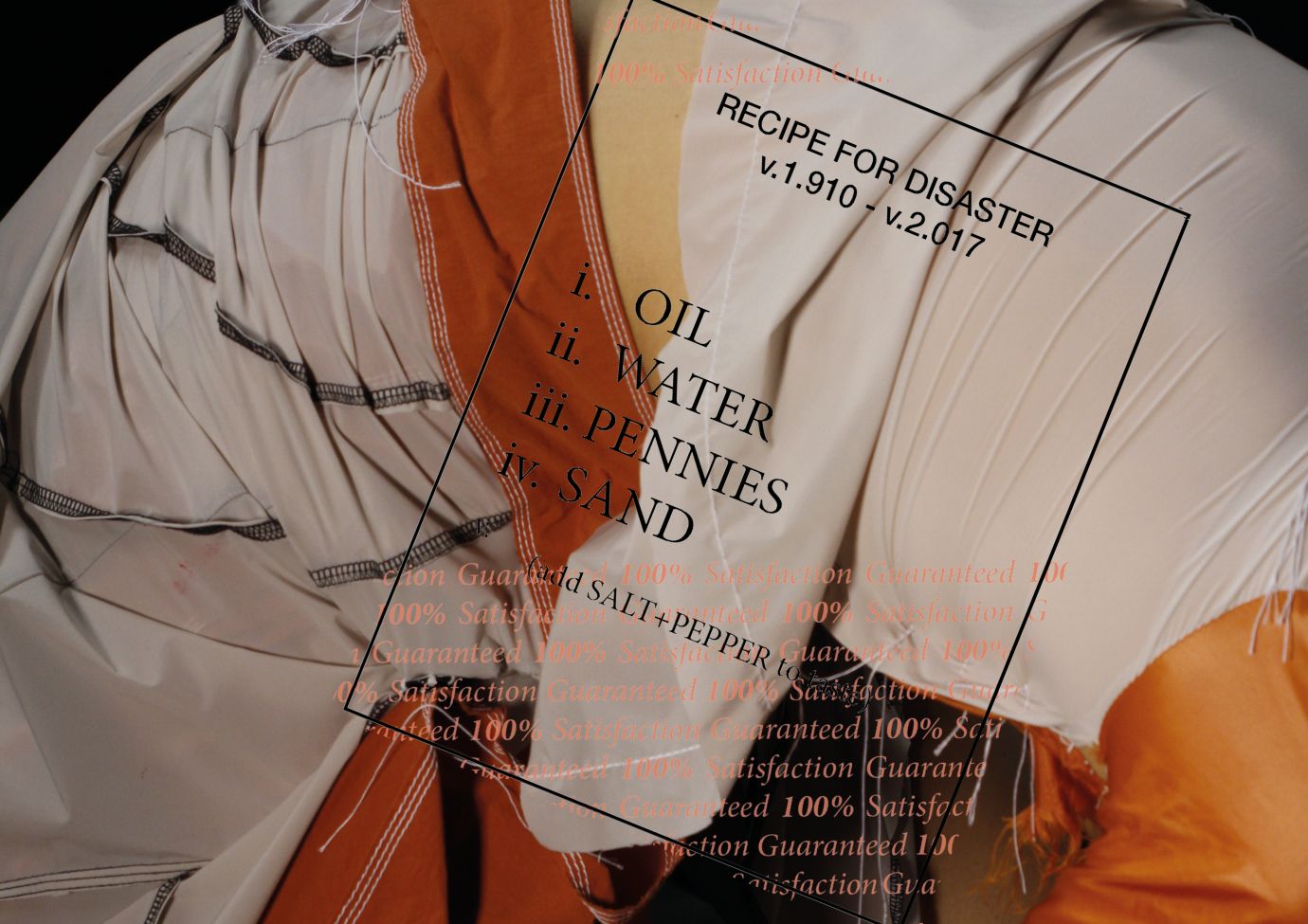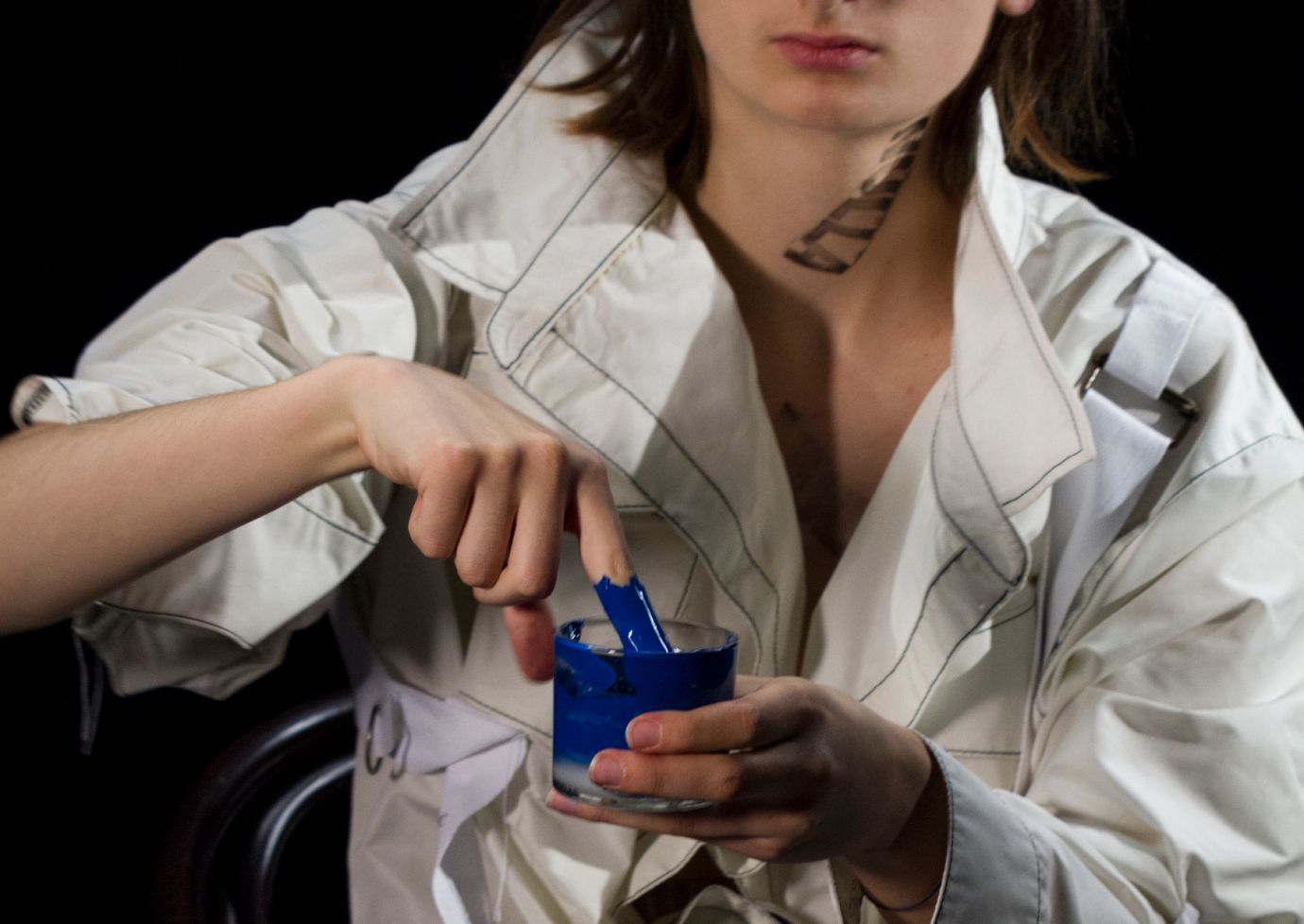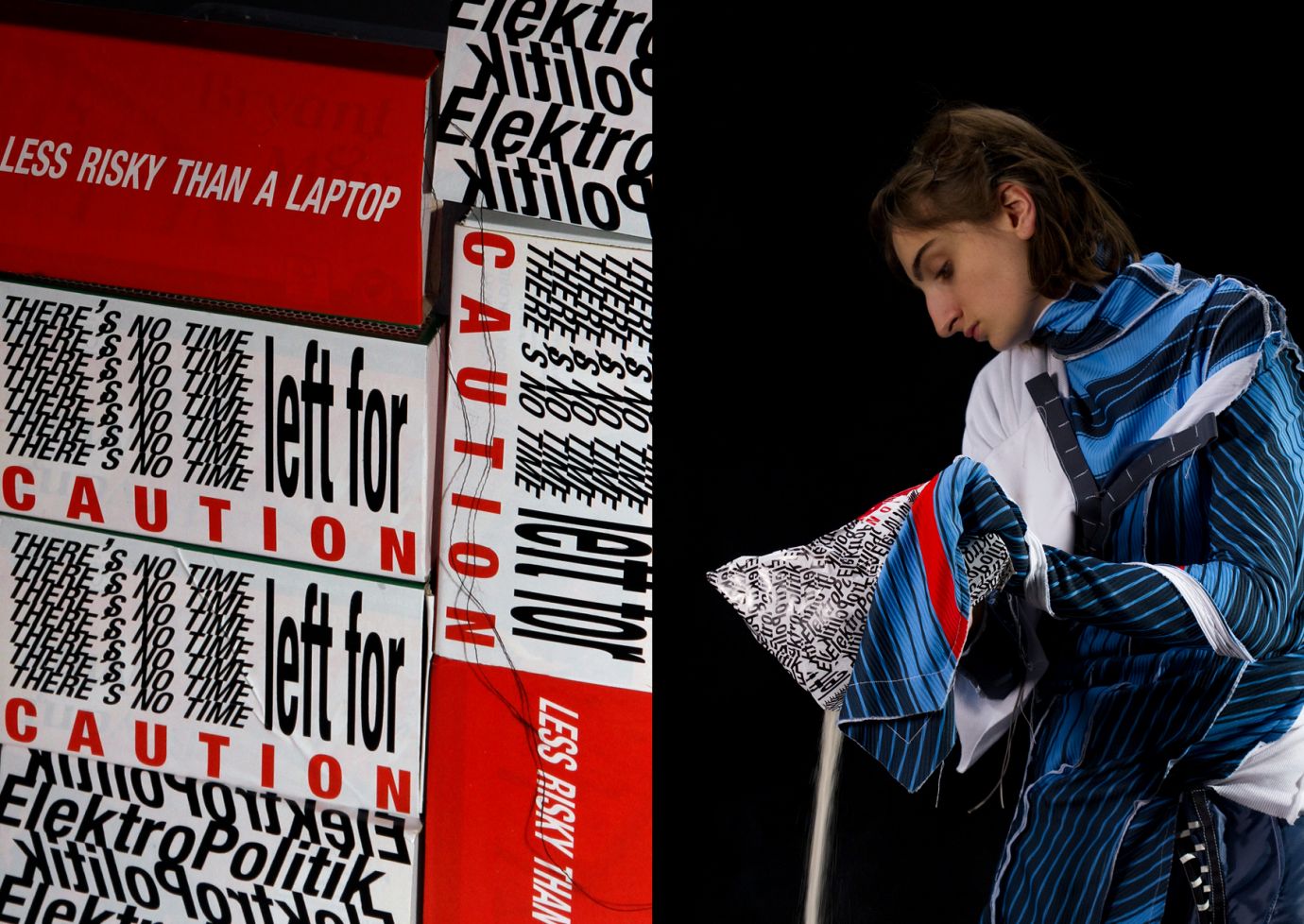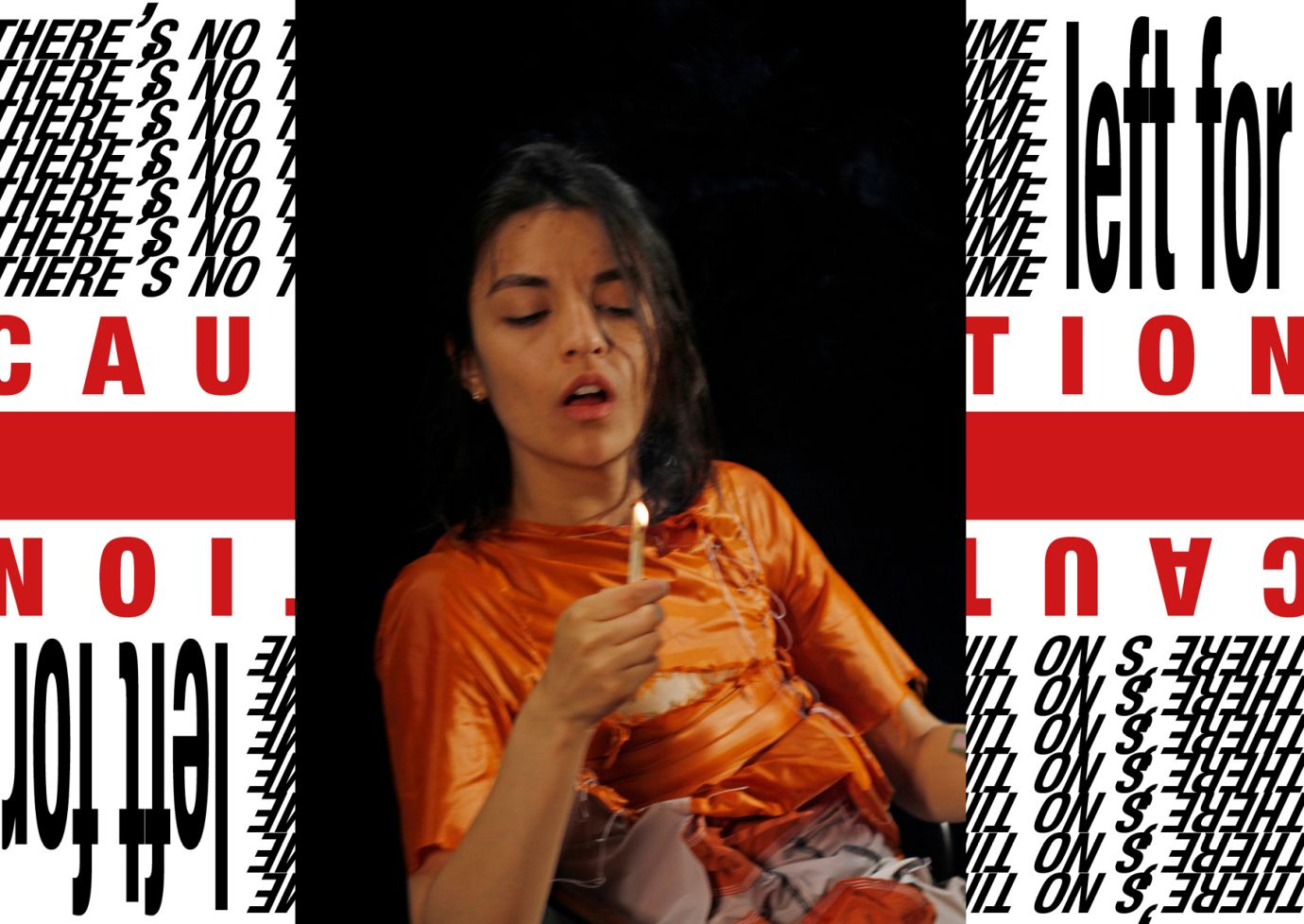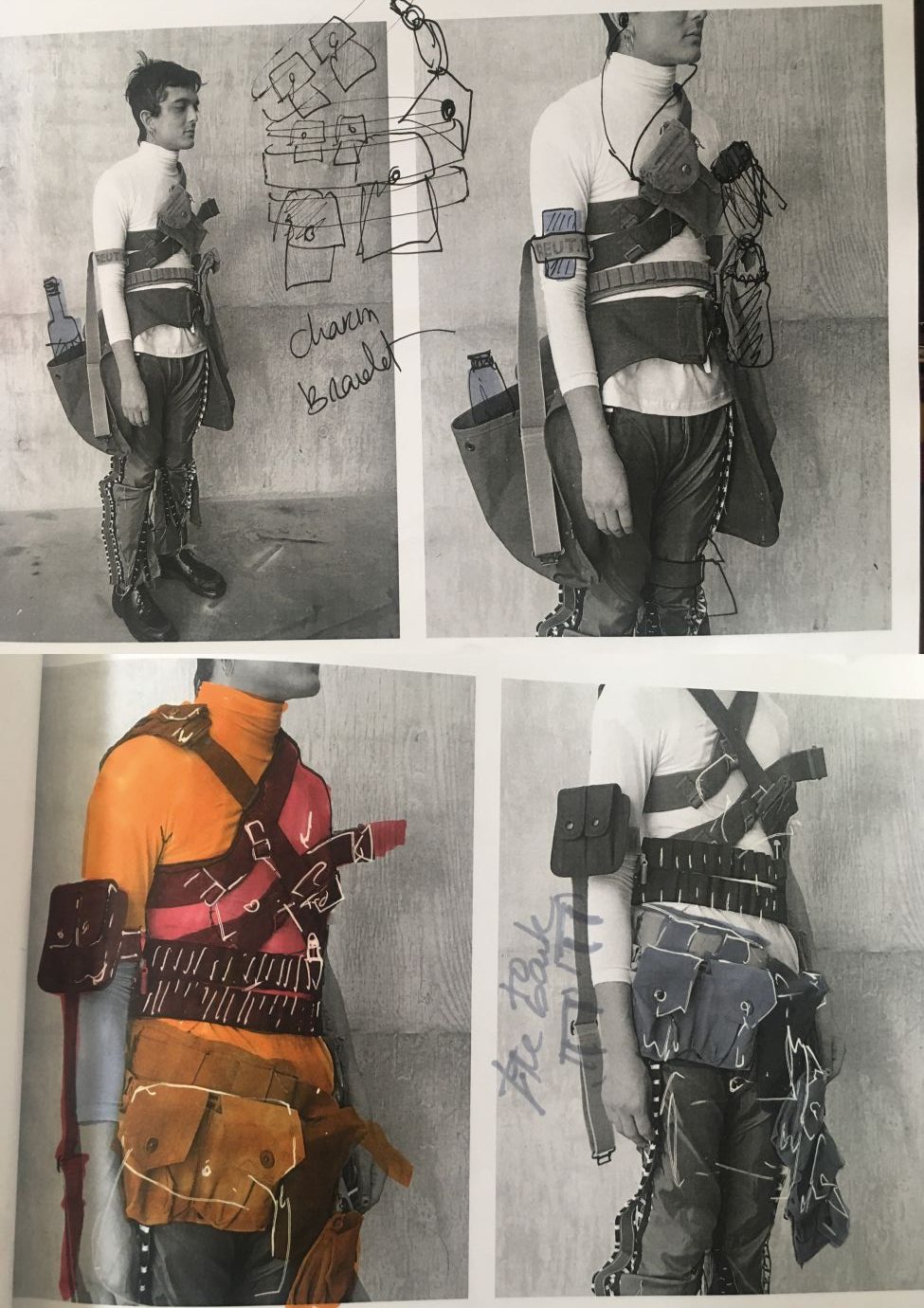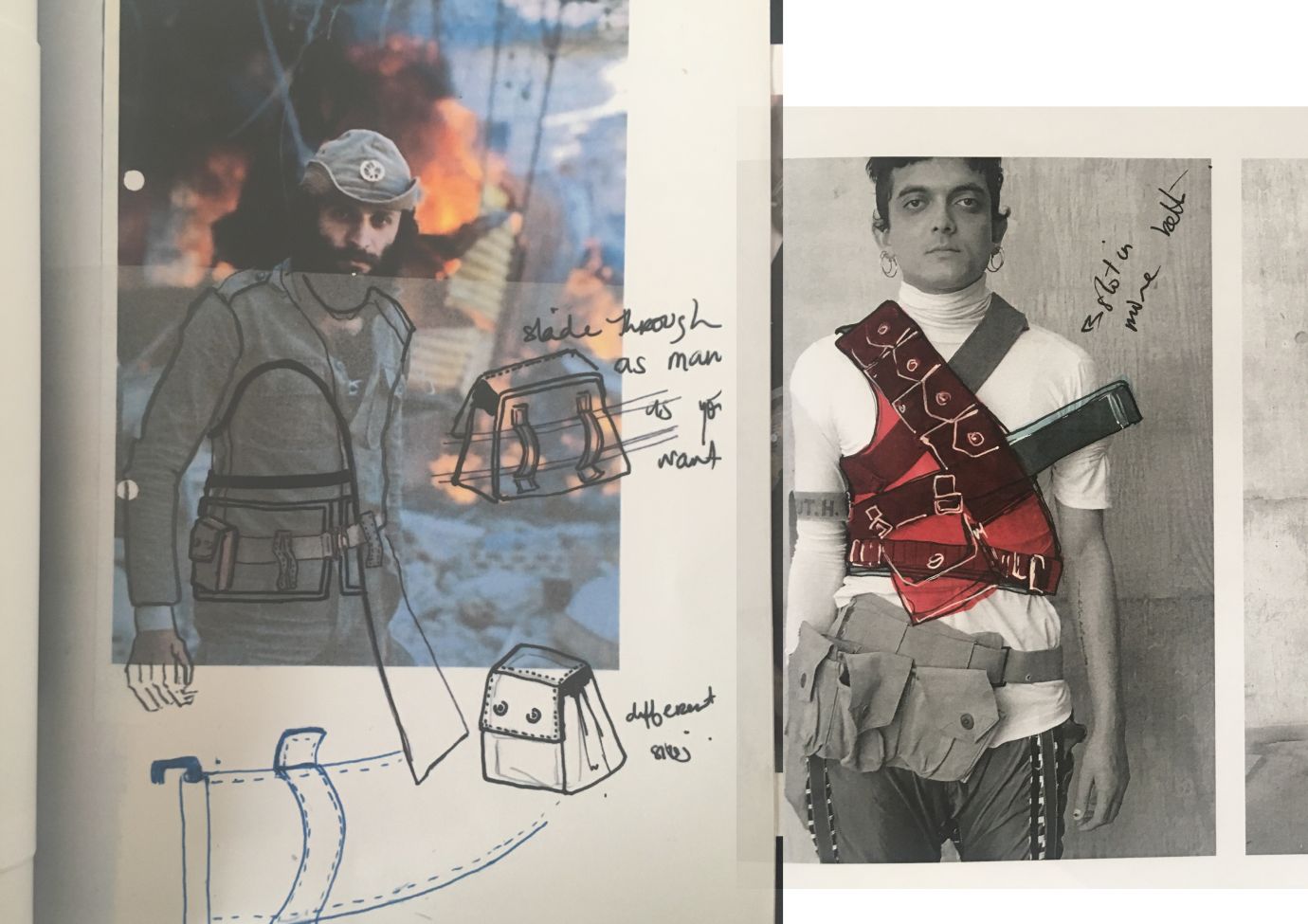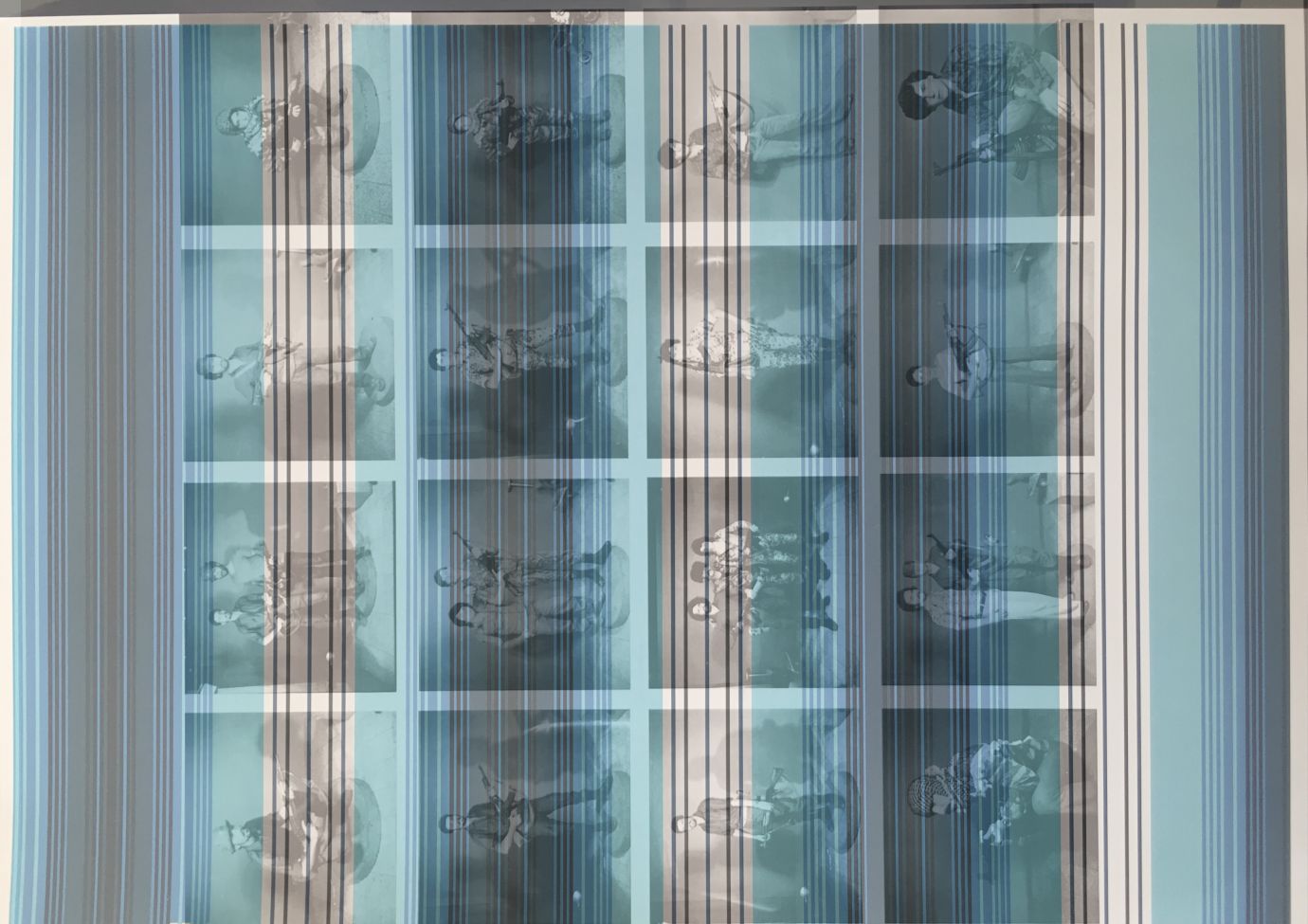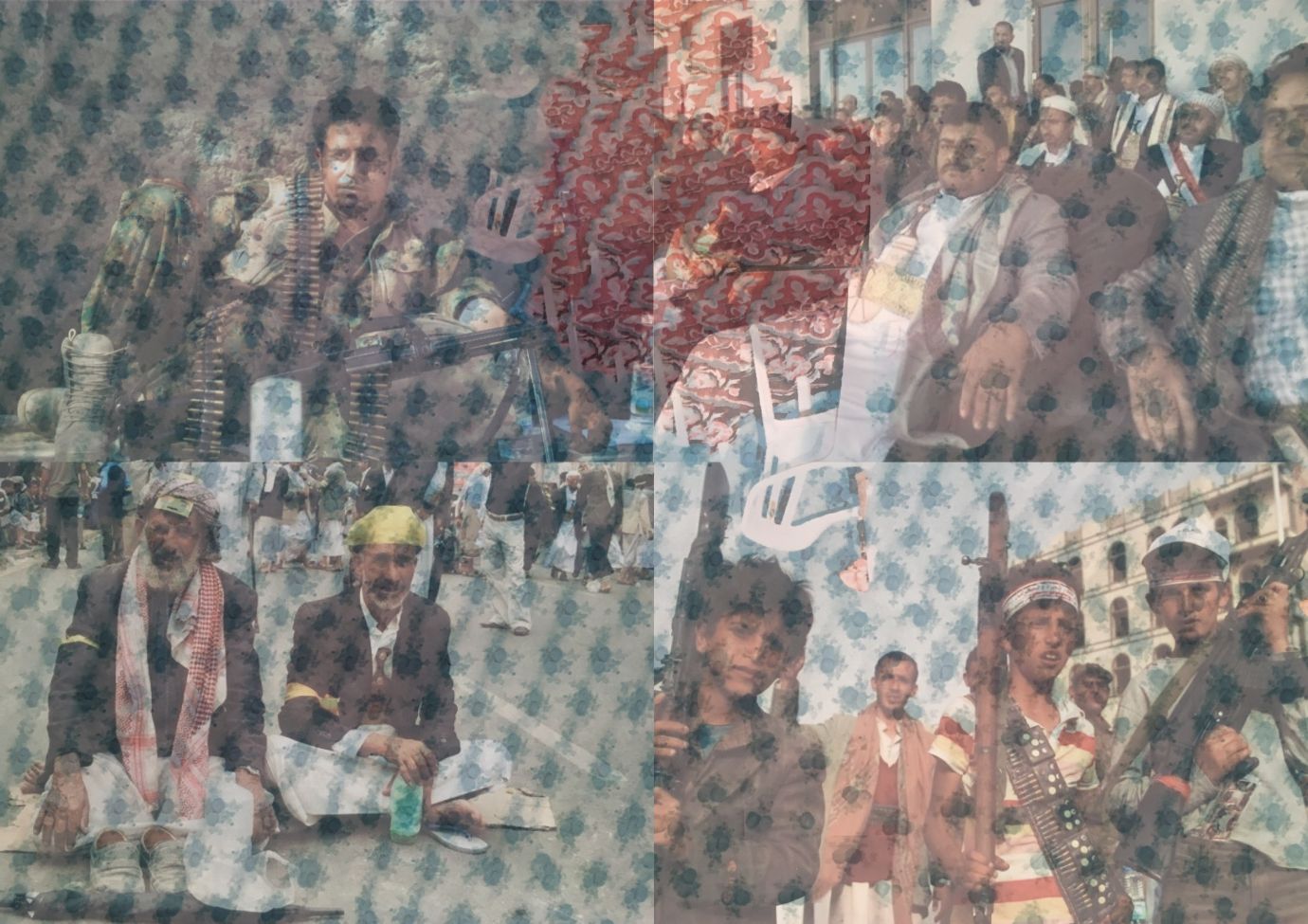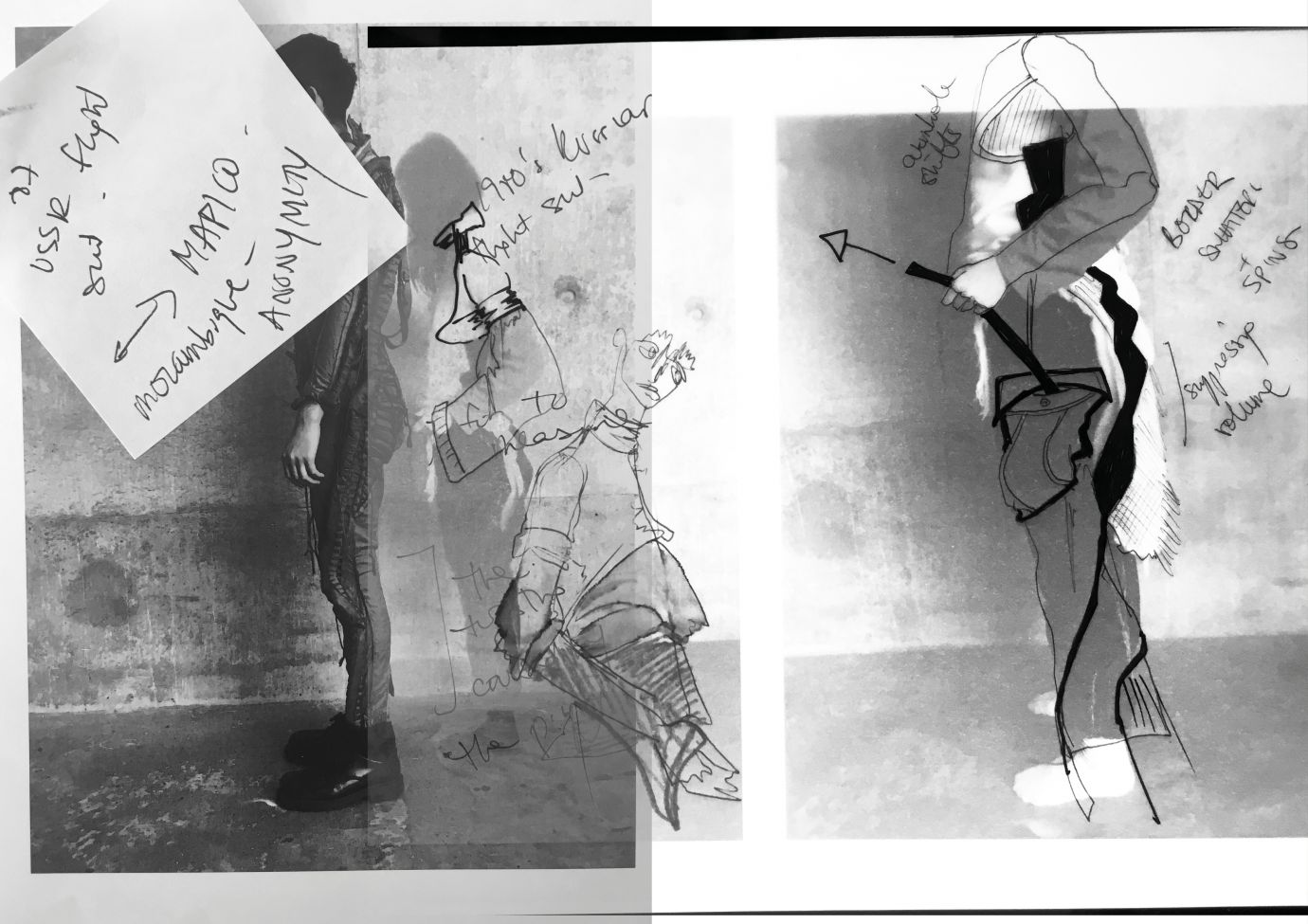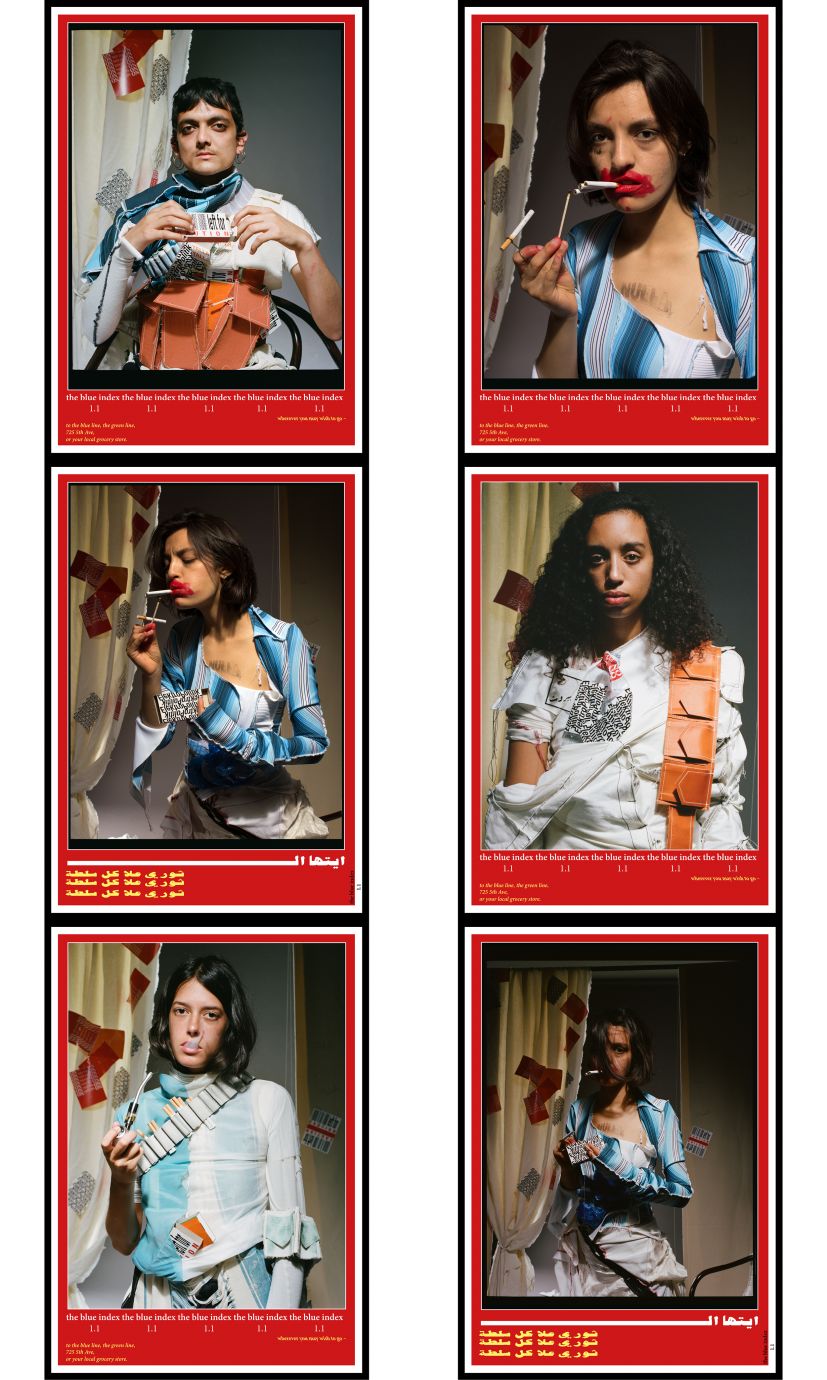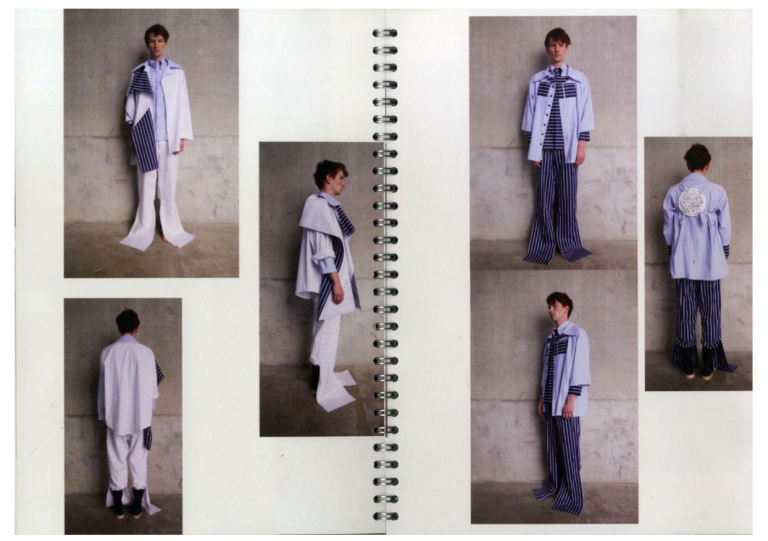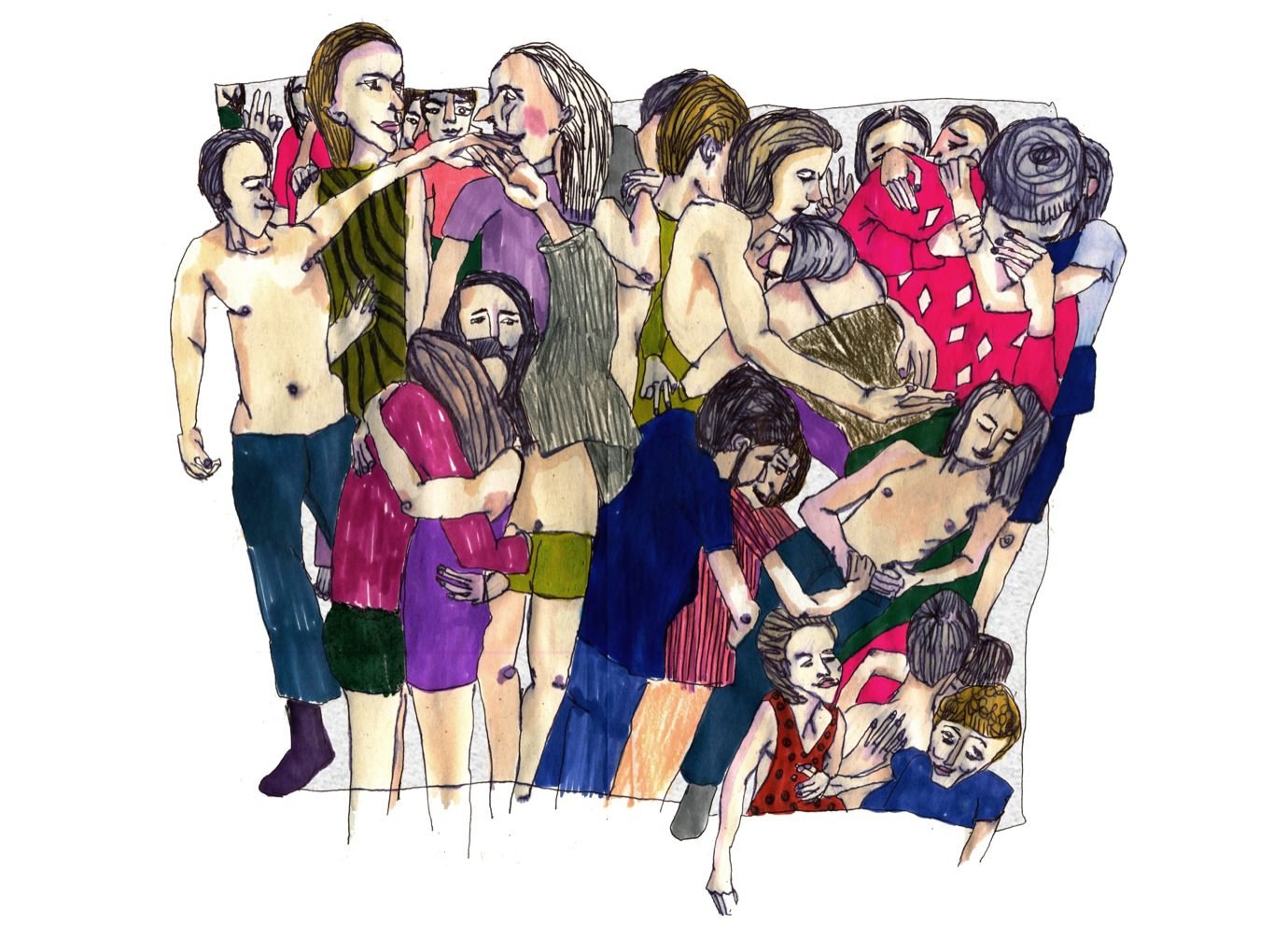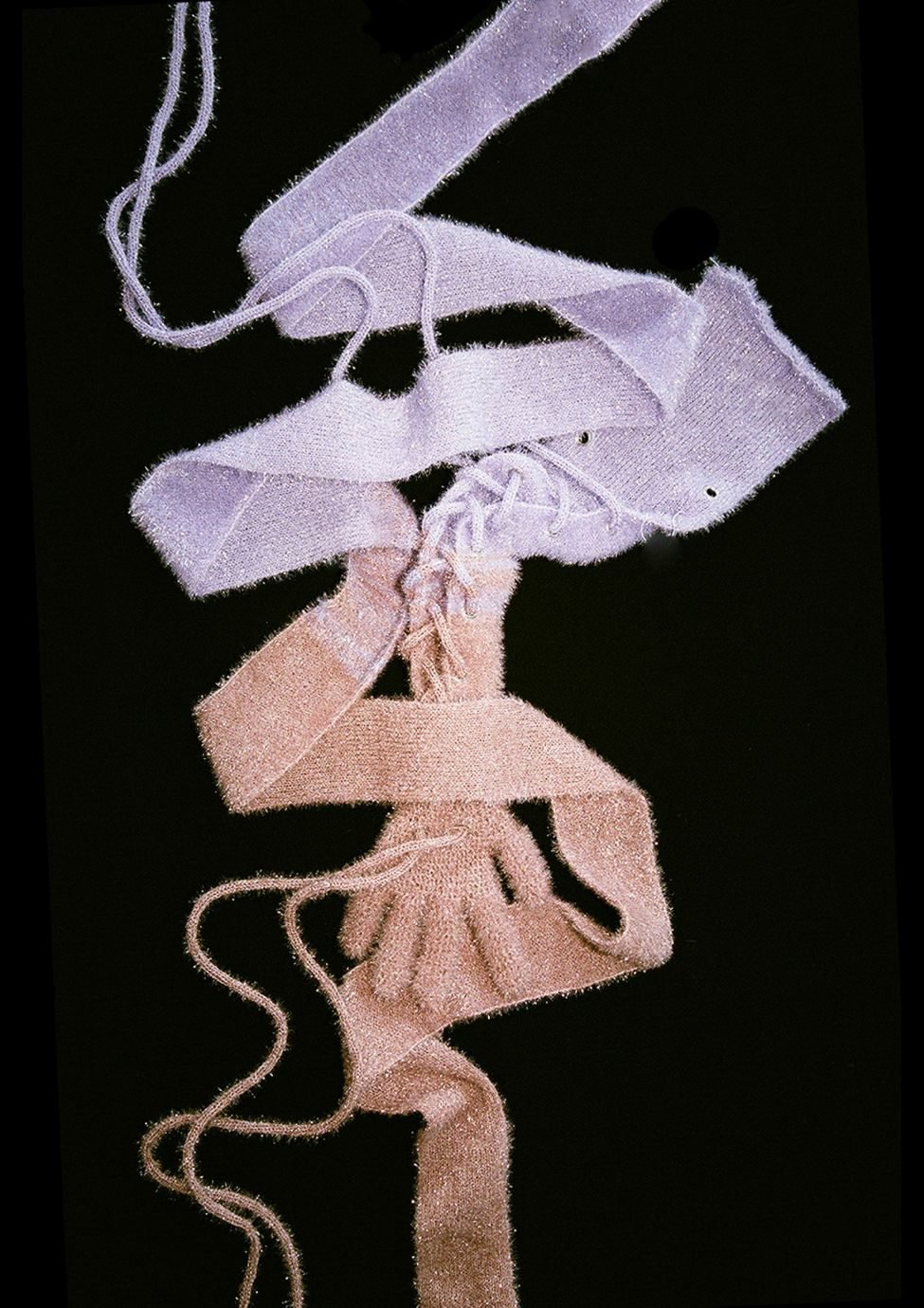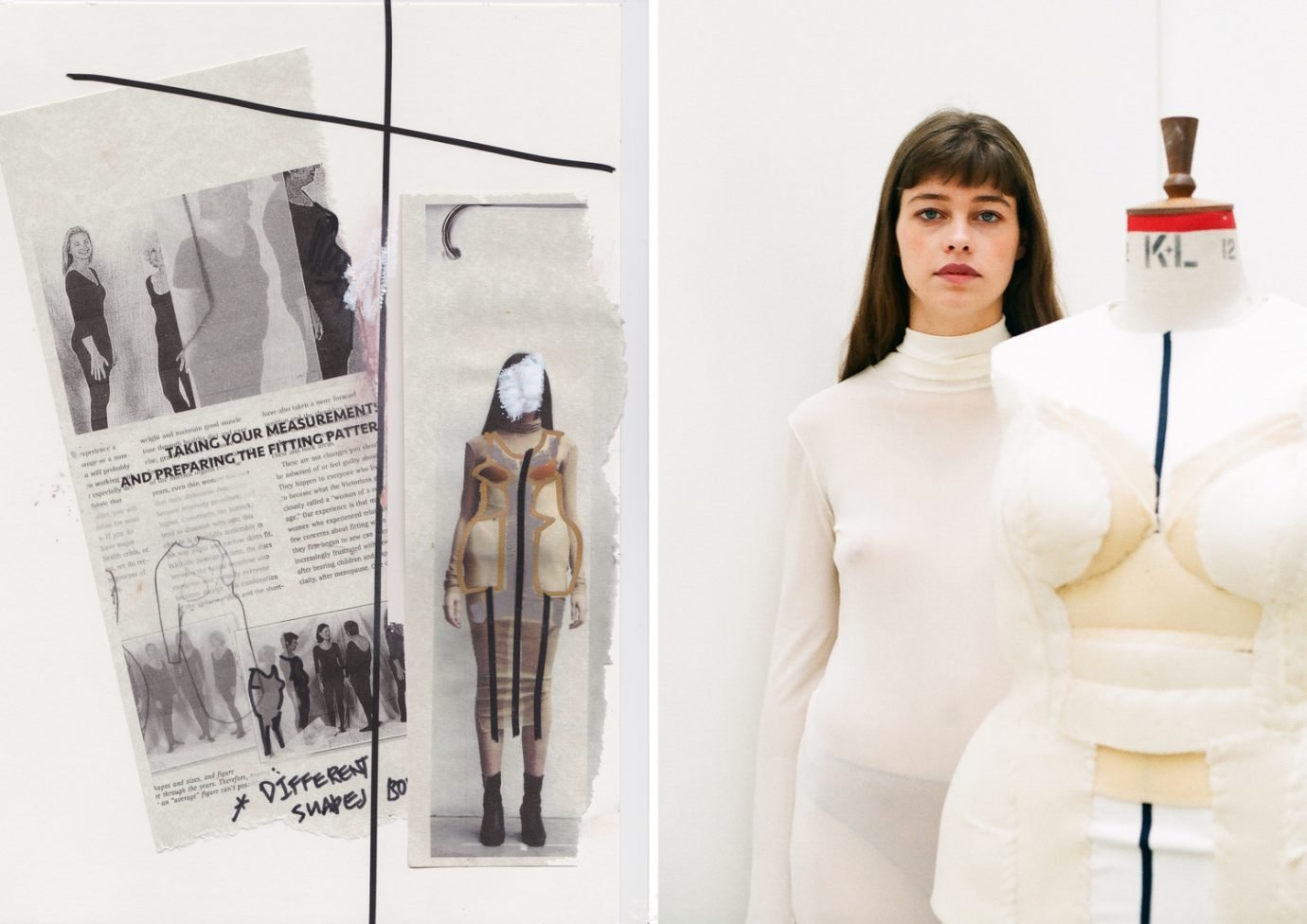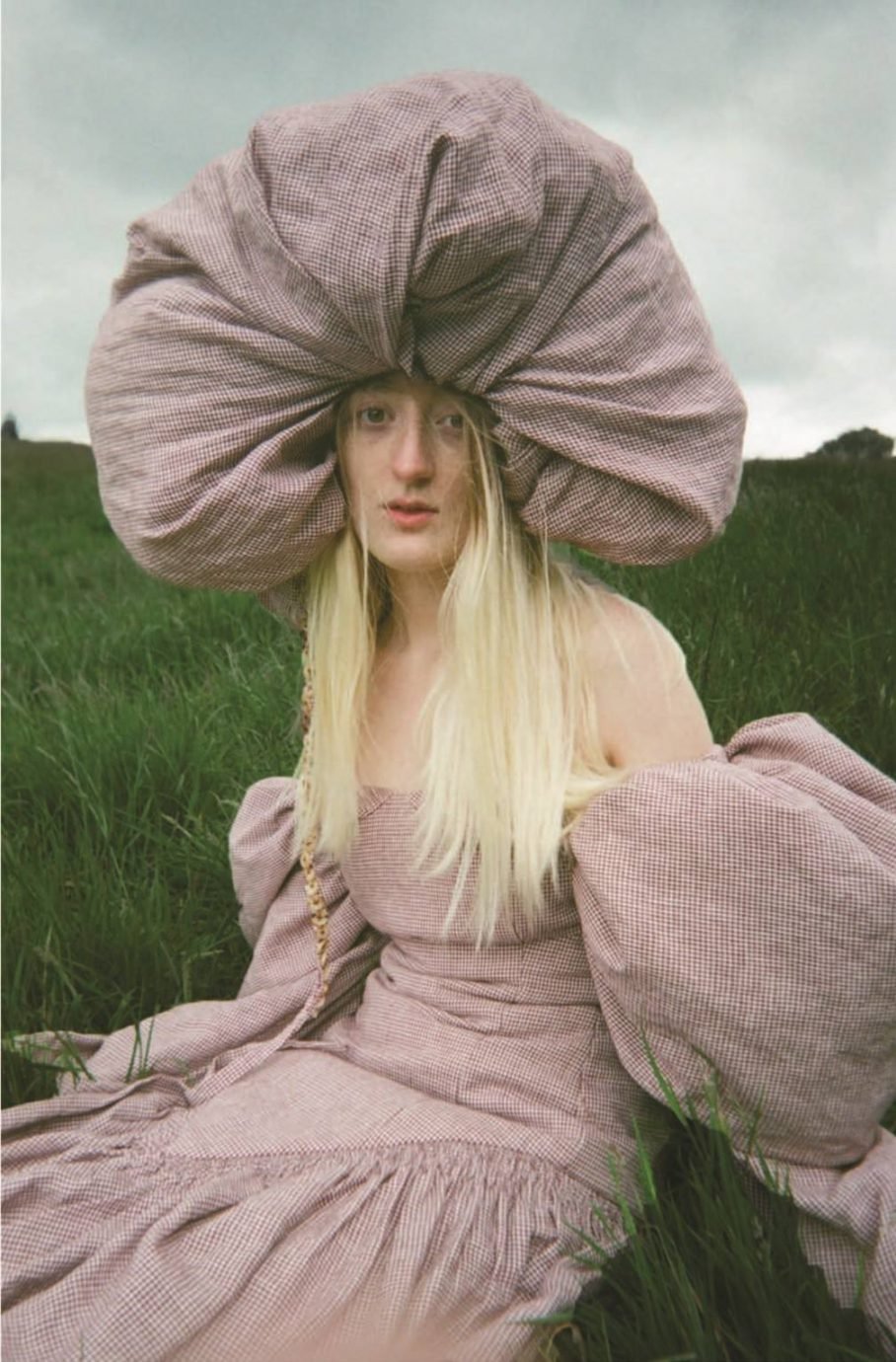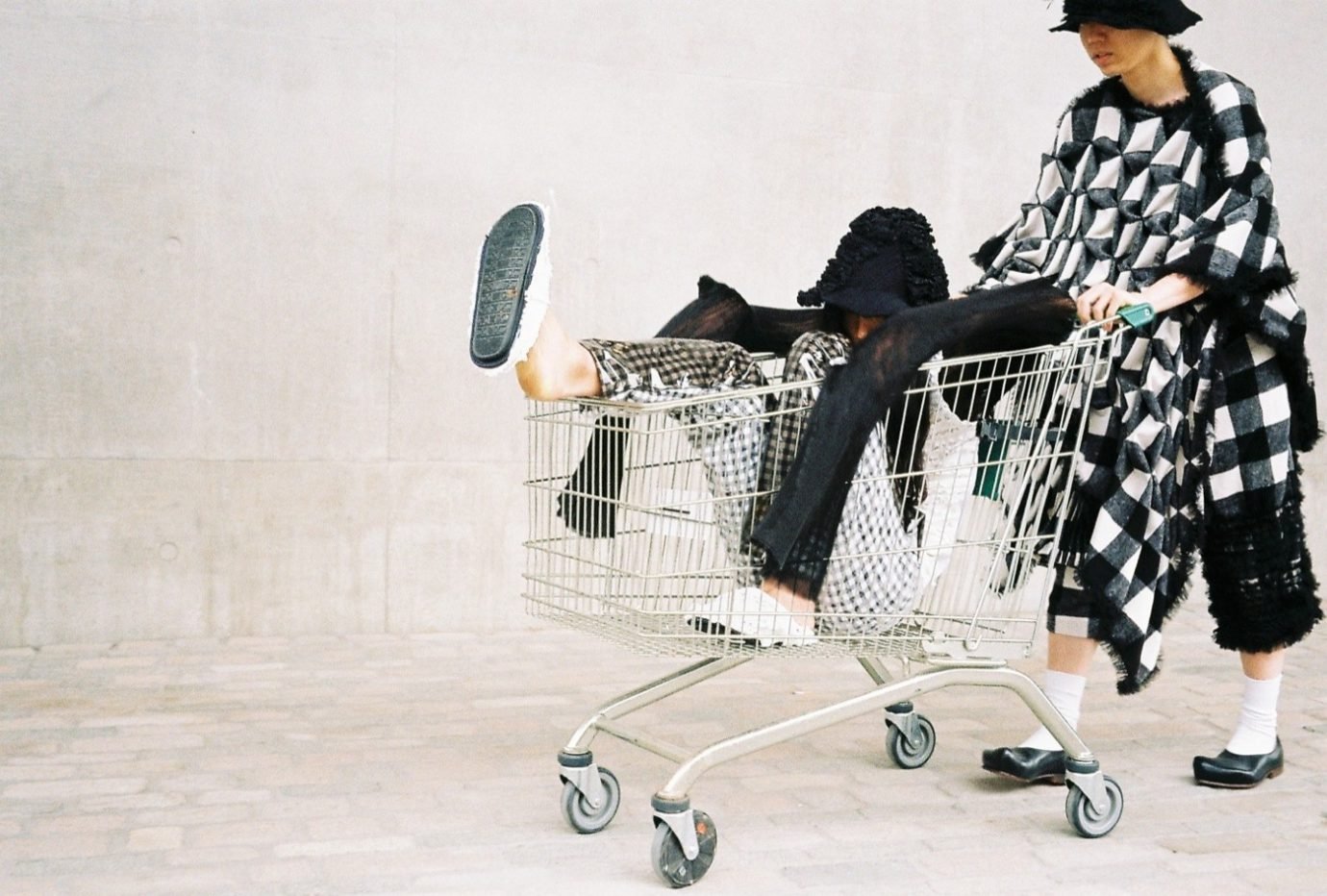Progressing from media politics to various symbols of power, Sheryn began to look into the psychology of military clothing. Exploring its functionality and history as well as looking at how it is made, she began to wonder why people were drawn to wearing something that stood as an obtrusive sign of power. If anyone puts on a piece of military clothing, the power that comes with the uniform is obvious. Sheryn thought about how she could portray a sense of intrinsic power through the subversion of blatant symbolism. From research to production, the entire process played out as a narrative in her mind. Women were running around looking like a mess, rushing out of bed, and trying their best to be a “lady.” She found that people felt comfortable and confident when they wore pieces from her collection, which in itself was a powerful statement.
New Waves: Sheryn Akiki
The emotional and conceptual collection of CSM BA Fashion graduate Sheryn Akiki explores propaganda at times of political theatre.
Even weeks after the Central Saint Martins Press Show, the powerful work of Sheryn Akiki has not lost its momentum. The L’Oréal Prize winning collection appropriates and redefines the meaning of propaganda amidst the confusion and disorder today. Since moving from Beirut to London six years ago, Sheryn was able to look back at her childhood and cultural heritage in a new light. From the Western portrayal of ISIS to Brexit and Trump’s election in the United States, Sheryn began to associate what is happening in recent years with the post-war generation. This collection allowed her to determinately express her anger in response to the misconception and lack of knowledge people have about the Middle East. Understanding politics as theatre, her unconventional approach to media politics became the impetus for her to trace the faint line between fiction and reality. This led Sheryn to create her own interpretation of propaganda through the mismatch of postcolonial residue – referencing the colour-coded mosaics of Lebanese politics in particular.
Urgency was a key principle throughout her collection. Even when choosing the models, Sheryn invested time into making sure that she found the right women to walk in her clothes. At first glance there is a sense of incoherence – the shoes don’t match and the dress looks dishevelled. However, her indirect and less obvious ways of creating uniforms through common staples emphasise the irony of power. The pieces do not have any affiliation of location or ethnicity but instead portrays a sense of displacement and timelessness. For this reason, the fabrics had to be light and season-proof. Distressed and printed linens (a summer fabric) were used to make coats and trousers. There was a mix of synthetics and naturals, including hand pressed and printed woven fabrics, which uncovered a sense of innocence. In order to render the mundane as powerful, Sheryn transformed familiar items of clothing through the use of military techniques taken out of context. All the clothes are cut to be sewn meticulously then become seemingly rushed. Replacing material with swimwear elastics, then spontaneously twisting and interpreting pieces to be seemingly dysfunctional. Sheryn’s final collection became a platform for her to scream and react to the idleness, reluctance, and constant feeling of unease that has infiltrated into today’s society.
“I HAVE THIS IMAGE IN MY HEAD OF THIS ARMY OF WOMEN, CROSSING THAT BORDER – THEY LOOK LIKE A MESS BUT THEY STILL HAVE THE POWER TO FRIGHTEN YOU – THEY’RE INVISIBLY READY… THEY ARE NOT AFFILIATED, AND THEY’RE RECRUITING.”

